Clustering
大约 9 分钟
Clustering
The Problem of Clustering
给定一组点,用一个点之间的距离概念,把这些点分成若干个群组,以便
- 一个集群的成员彼此接近/相似
- 不同群组的成员是不一样的
通常情况下,
- 点是在一个高维的空间里
- 相似性的定义是使用距离度量
- Euclidean, Cosine, Jaccard, edit distance, ...
Example
Clustering Problem: -> Documents
- Represent a document by a vector (x1, x2,..., xd), where x = 1 if the i th word (in some order) appears in the document
- d 是否无限实际上并不重要;即,我们不限制单词集
具有相似词组的文档可能是关于同一主题的
Clusters & Outliers
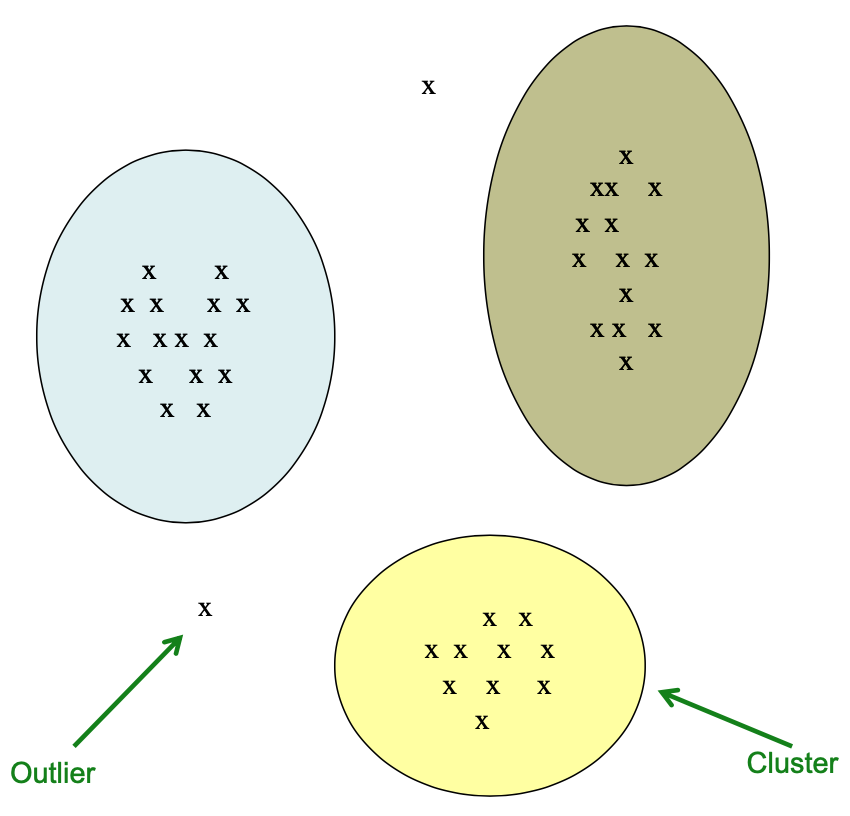
不可能三角
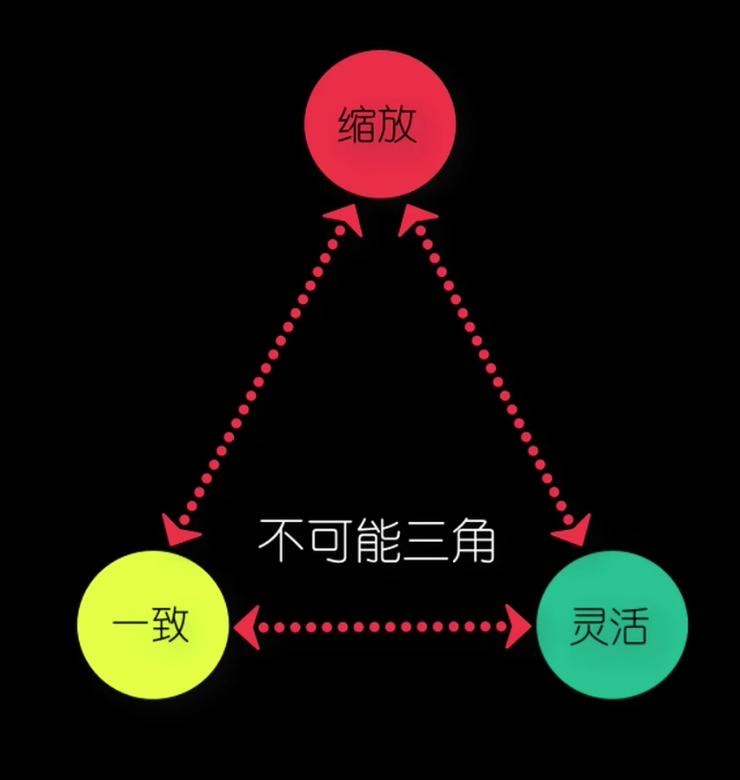
聚类是一个很难的问题!
- 二维的聚类看起来很容易
- 对少量数据进行聚类看起来很容易
- Many applications involve not 2, but 10 or 10,000 dimensions
高维空间看起来不同:几乎所有成对的点都在差不多的距离上
Distance
Sets as vectors
1.Measure similarity by the cosine distance
2.Measure similarity by Euclidean distance
Sets as sets
3.Measure similarity by the Jaccard distance
两个集合的 Jaccard 相似度是它们的交集的大小除以它们的并集的大小:
Jaccard distance:

- Document D1 is a set of its 𝑏 words
- 等价地,每个文件是k个词空间中的一个0/1向量
- Each unique word is a dimension
- Vectors are very sparse
K-means Clustering
- Assumes Euclidean space/distance
- Start by picking k, the number of clusters, 需要手动指定
- 通过在每个集群中随机选取一个点来初始化集群
- 示例:随机选择一个点,然后选择 k - 1 个其他点,每个点都尽可能远离之前的点
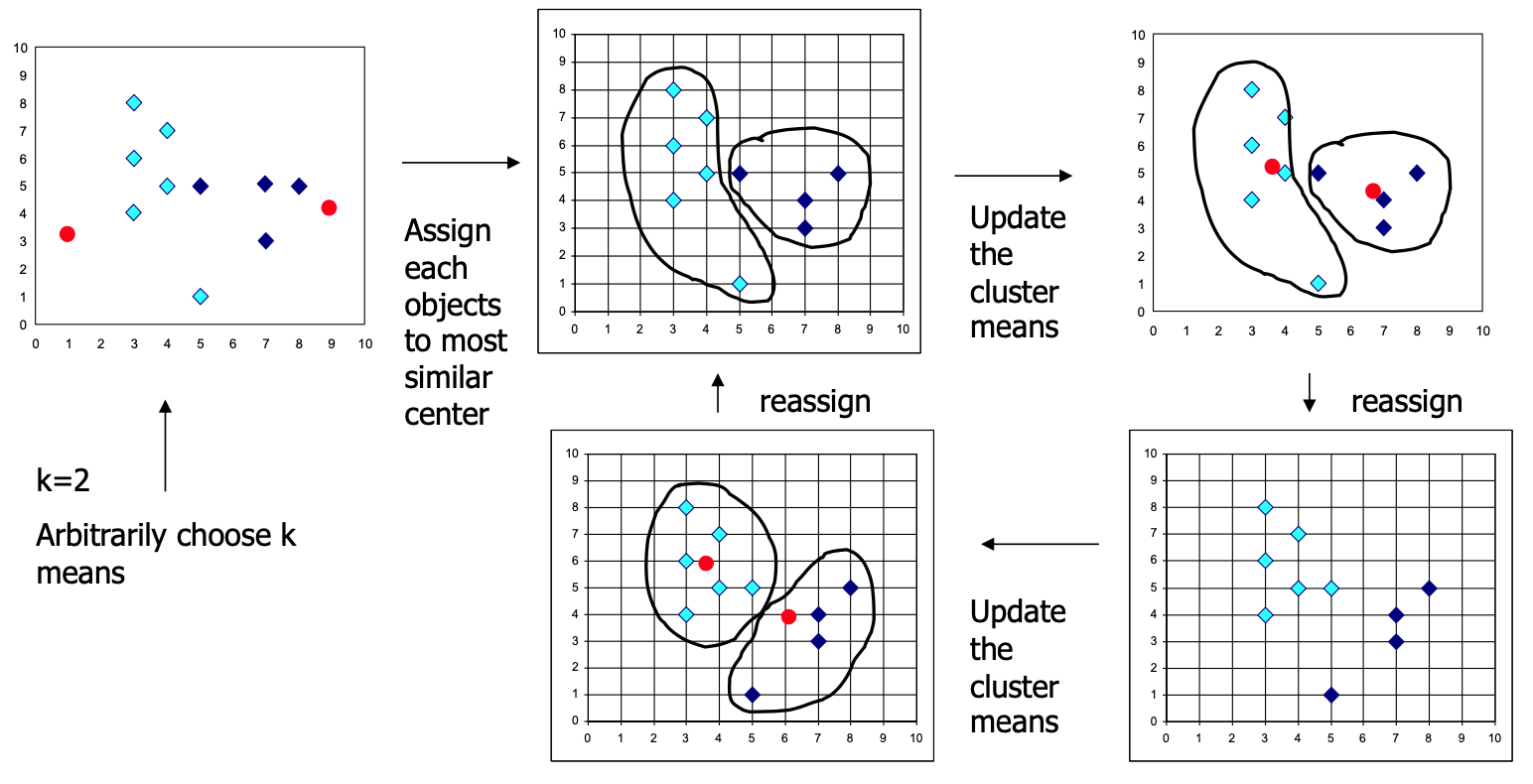
Populating
- 对于每一个点,将其放在当前中心点最接近的群组中。
- 在所有的点被分配后,更新 k 个集群的中心点的位置。
- 将所有的点重新分配到它们最近的中心点上
- Sometimes moves points between clusters
重复 2 和 3,直到收敛「convergence」
Convergence: Points don’t move between clusters and centroids stabilize
Initialization
- 未指定初始化质心的方法。一种流行的开始方式是随机选择 k 个示例。
- 产生的结果取决于中心点的初始值,而且经常发生发现次优分区的情况。标准的解决方案是尝试一些不同的起点
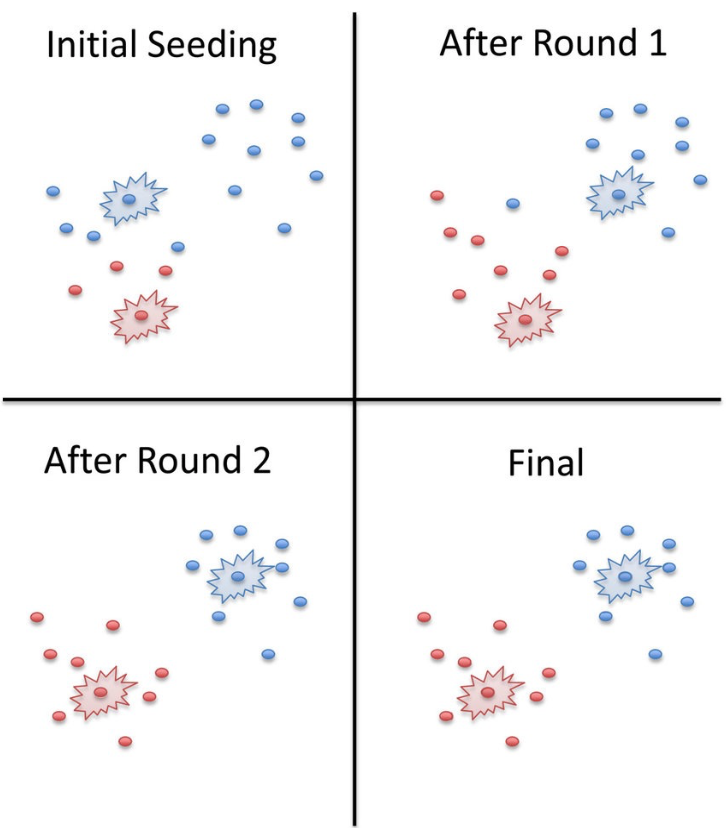
Pros & Cons
- Simple iterative method
- User provides “K”
- Often too simple ----> bad results
- Difficult to guess the correct “K”:在我们想找到聚类之前,我们可能不知道聚类的数量
- 不保证最佳解决方案
Centroid & Clustroid
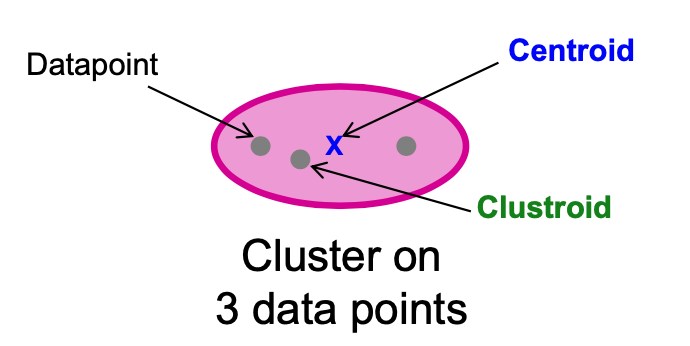
- Centroid 是集群中所有(数据)点的平均值。这意味着中心点是一个 "人工 "点。
- Clustroid 是一个现有的(数据)点,与集群中所有其他点 "最接近"。
Centroid
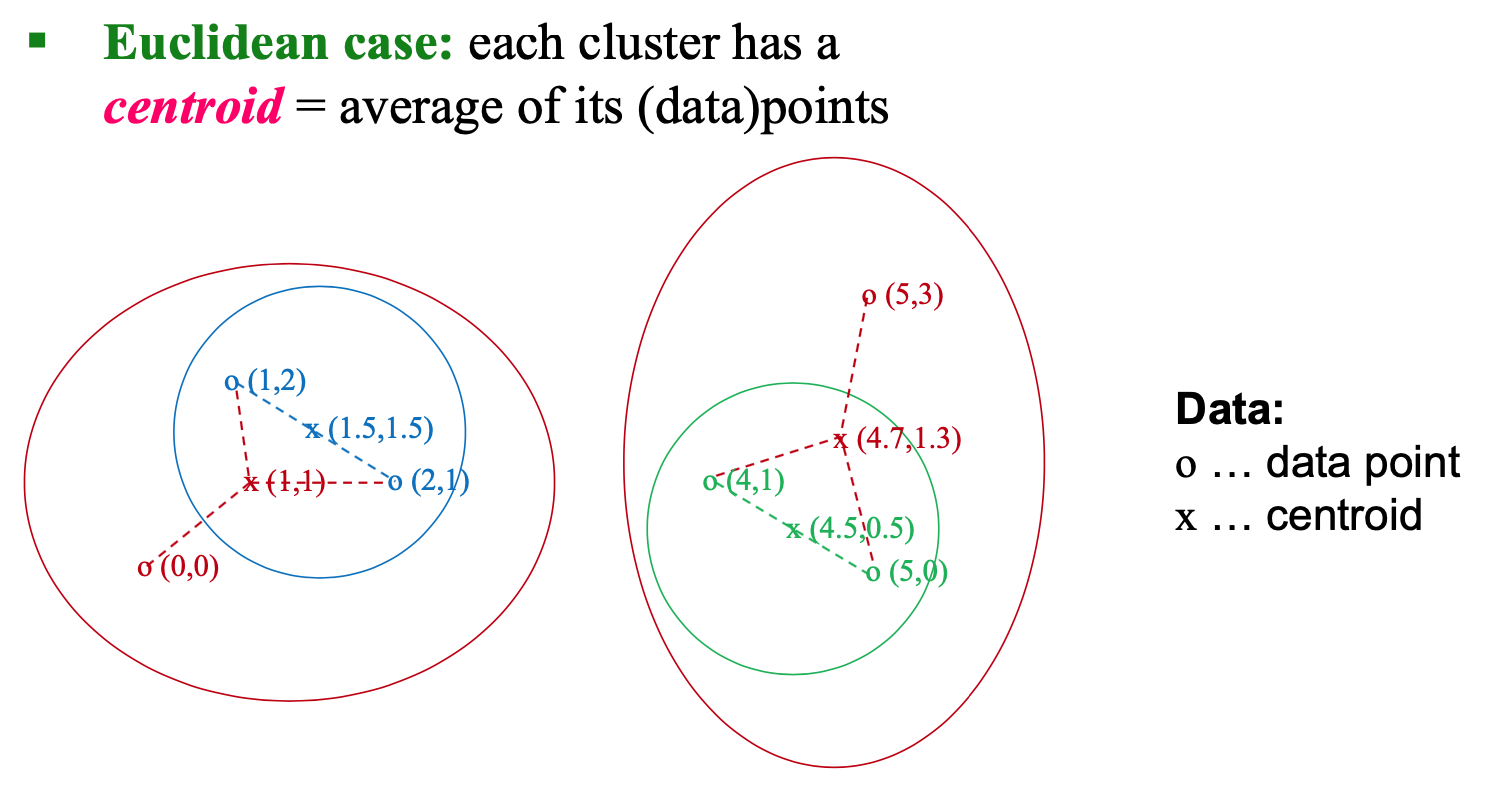
Clustroid (non-Euclidean Case)
- 我们可以谈论的唯一 "位置 "是点本身,即,没有两个点的 "平均"。
- clustroid = point “closest” to other points
- Possible meanings of “closest”:
- Smallest average distance to other points
- Smallest maximum distance to other points
- Smallest sum of squares of distances to other points, e.g., for distance metric d clustroid c of cluster C is: